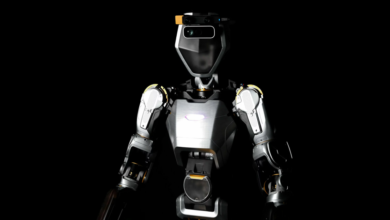Revolutionizing Underwater Exploration with Carnegie Mellon’s Robotic Snake

In an age where underwater exploration is as critical as it is perilous, Carnegie Mellon University has made significant strides in enhancing the safety and efficiency of these ventures. The university’s researchers have developed a ground-breaking underwater robotic snake, aimed at supplanting human divers for inspection tasks that carry inherent risks.
The aquatic robot is a product of sophisticated engineering, designed specifically to cope with the challenging spaces and shifting conditions in underwater environments. Its modular and serpentine design is a key feature that enables the machine to access confined areas, smoothly gliding past obstacles where humans and traditional robots may struggle. Its versatility showcases the innovation’s capacity to not just replace, but potentially surpass the capabilities of human divers in various inspection activities.
Carnegie Mellon’s invention is set to redefine marine technology. It is designed to provide a novel solution to the hazardous demands of underwater inspections. By doing so, it also paves the way for more ambitious scientific endeavors, mapping uncharted territories and gathering data that may have otherwise been out of reach.
In summary, this robotic innovation does more than optimizing safety. It expands the scope of marine exploration by presenting a multifunctional tool that could unlock new findings in oceanography and environmental science. The deployment of Carnegie Mellon’s robotic snake could signal a transformative moment for industries and researchers alike, as they strive to uncover the mysteries harbored beneath the water’s surface.
Underwater Robotics Revolution in Marine Exploration
The development of advanced underwater robotics, exemplified by Carnegie Mellon University‘s innovative robotic snake, represents a significant leap forward in the field of marine technology. This robotic feat is not an isolated incident but part of a broader trend towards automating and enhancing underwater operations across various industries.
The ocean, covering more than 70% of Earth’s surface, holds vast resources and untapped scientific knowledge. The underwater robotics industry is poised to propel the exploration and utilization of this immense frontier. The global market for underwater robots, also known as autonomous underwater vehicles (AUVs) and remotely operated vehicles (ROVs), is expected to experience robust growth. Market forecasts predict a compound annual growth rate (CAGR) of around 13.5%, signaling a thriving sector through the coming years.
Industries such as offshore oil and gas have traditionally deployed underwater robots to perform tasks like pipeline inspection and repair, while scientific research and environmental monitoring are increasingly benefiting from these tools. Moreover, the defense sector is continually exploring marine technology for surveillance, mine detection, and underwater security purposes.
However, the path forward is lined with challenges. Issues such as high costs of development and operation, technical complexities in communications underwater, and the need for advancements in battery life and autonomy are some of the roadblocks facing the industry. Yet, the potential benefits of overcoming these hurdles cannot be overstated.
The introduction of the robotic snake by Carnegie Mellon brings solutions that may address some of these challenges. Its serpentine design allows for unparalleled flexibility and access to confined spaces, which enhances the prospects of thorough inspections, habitat monitoring, archaeological dives, and disaster site assessments.
Furthermore, such innovations are instrumental in accelerating the progress of environmental studies, helping to better understand the dynamics of ocean ecosystems, and the effects of climate change. They crucially facilitate prolonged observations in deep-sea environments that are otherwise inhospitable to humans.
In embracing the latest robotics technology, various sectors are looking to revolutionize their underwater operations. Carnegie Mellon’s robotic snake is an example of pioneering work that unfolds a myriad of possibilities for examining what lies beneath the waves. This is not just a tool for today but a harbinger of the sophisticated fleet of underwater robots that will redefine our interaction with the ocean’s depths.
As the industry progresses, stakeholders and researchers must navigate these challenges with innovation and sustainability in mind. The melding of robotics with marine science is an exciting frontier that promises to unearth the secrets of the deep blue ocean, providing benefits that ripple across science, industry, and environmental protection.

Igor Nowacki is a fictional author known for his imaginative insights into futuristic technology and speculative science. His writings often explore the boundaries of reality, blending fact with fantasy to envision groundbreaking inventions. Nowacki’s work is celebrated for its creativity and ability to inspire readers to think beyond the limits of current technology, imagining a world where the impossible becomes possible. His articles are a blend of science fiction and visionary tech predictions.



